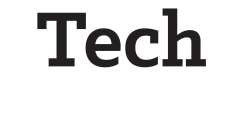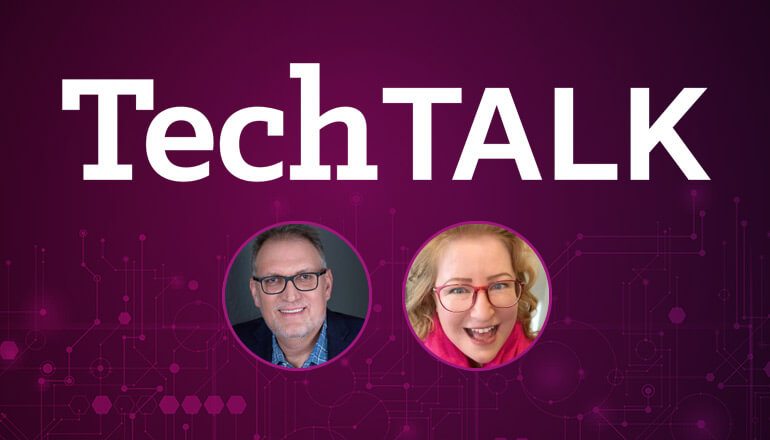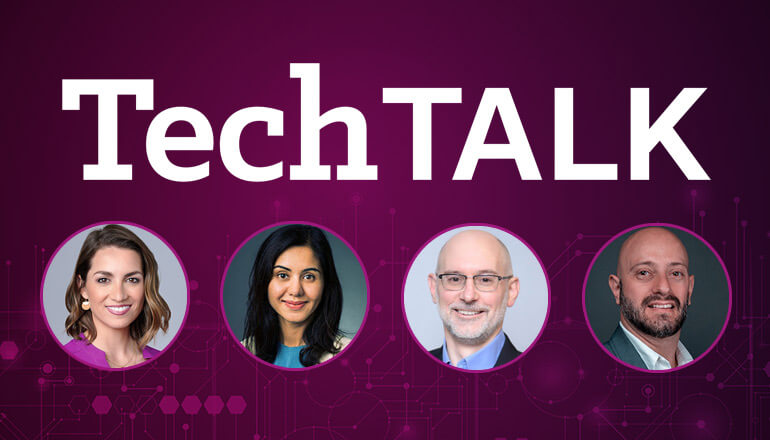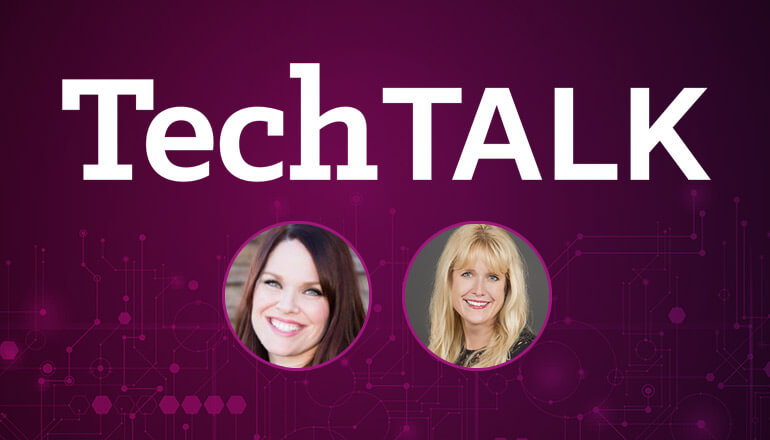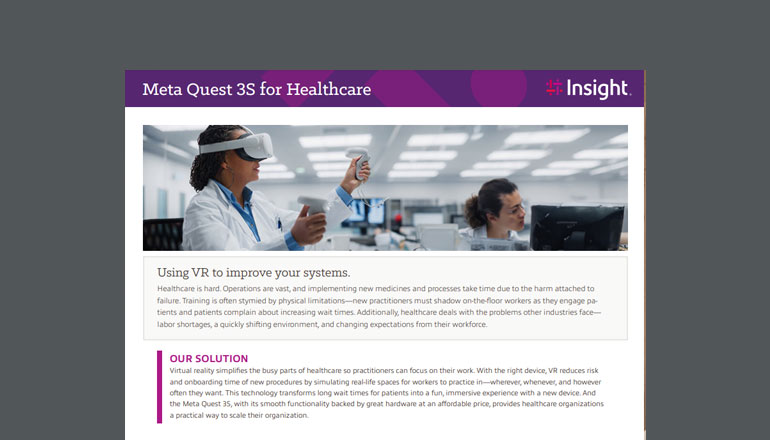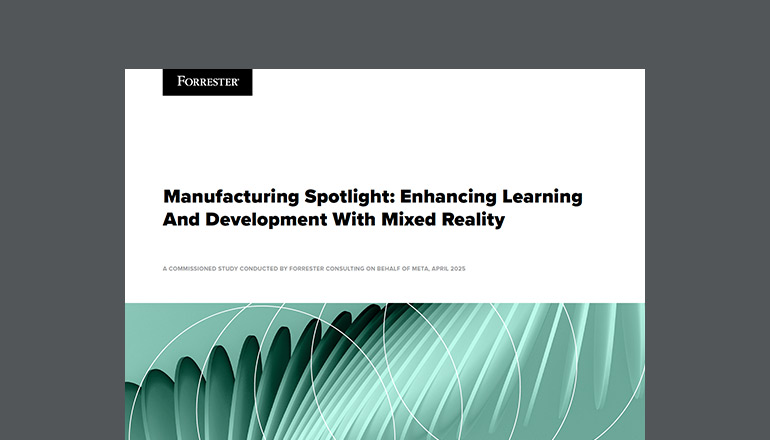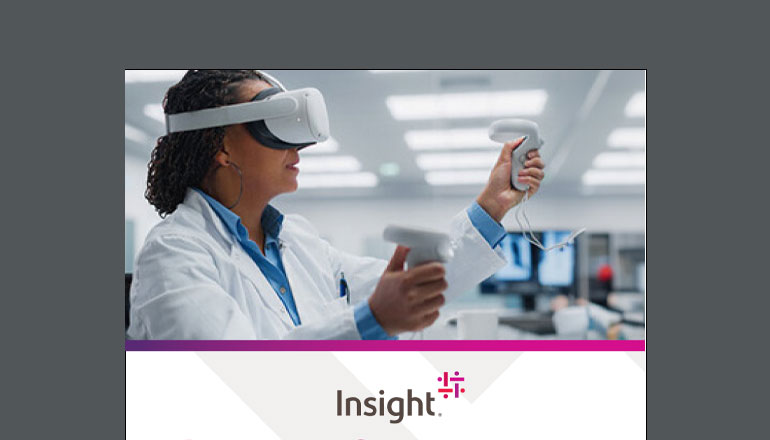Audio transcript:
Insight TechTalk – The Power of Mixed Reality with The Microsoft HoloLens 2
Published June 30, 2020
[Music]
DAVID
Hi everyone, and thanks for joining today's Insight Tech Talk. I'm David Eager with Insight Public Sector which is the government-facing side of Insight. And with me today is Matt Fedorovich. He's the national lead for Immersive Technology within our digital innovations solution group.
Matt, how are you doing today?
MATT
Good, how are you?
DAVID
No, not too bad, not too bad. So today we're here to talk about mixed reality in Microsoft HoloLens 2. Both from a commercial and from a government perspective. You know, really to kick things off, Matt, can you tell us a little bit. You know, define mixed reality versus maybe the better-known virtual reality or augmented reality which are really the better-known terms in the industry.
MATT
Yeah, so we definitely have a lot of alphabet soup in the industry today. And mixed reality and HoloLens 2, HoloLens 2 is a mixed reality device, or what's also known as a spatial computer.
So we have this spatial computing spectrum. If you think about VR, virtual reality, it's basically taking you to a fully immersive environment and removing your physical world which is one end of the spectrum. And when you go to the complete opposite end of the spectrum there's obviously a reality there. But within mixed reality we're gonna basically take you as close to reality as possible within an immersive environment that's leaving your physical environment to basically have interactions, different types of activities and immersion and so on. So it's more of a mixed reality kind of way.
DAVID
Yeah. Well and I know that mixed reality, at least the concept, has been around for years really. And I know devices like the HoloLens 2 have done a lot to really move it to where it's more of a reality in using in business cases today's and really helping people enable the benefits of mixed reality.
What are some of the other differentiators that you see come out?
MATT
Definitely the first-party apps that are being built and the applications that are being built for the device itself on the differentiators. For instance remote assist is one of the biggest applications out there today. It's personally I have a conversation about that pretty much every single day. And Remote Assist is really the hands-free collaboration tool that leverages existing infrastructure that business is already using today but gives you a fully hands-free mixed reality collaboration experience which is really helpful in today's world where we're unable to fly experts to locations. We need experts to be on call all the time essentially and Remote Assist is there to help.
DAVID
Well I think that's a good transition, you know, because of the current state we're in with travel, you know, what are the applications for this device that you're seeing in the marketplace?
MATT
Yeah, there's a lot of different applications for this. And there's different segments in different industries. I mean this device can be used within any industry, right. We talk about manufacturing, retail, healthcare is one of the biggest. The federal space. If you look at healthcare today, for instance, we're working with a lot of major hospitals today to provide that Remote Assist experience basically to take one doctor, place a HoloLens on their head, and have a team of 14 doctors in another part of the hospital who aren't gonna be exposed now, and that one doctor is floating around the hospital going patient to patient while those 14 doctors are talking to them, giving them instant patient information, things along those lines, and collaborating. So it's really, really powerful in that industry. Also when you talk about training, you know, you look at the federal space for training. You take a look at soldier-based training, whether that's, it kind of in the in-flight in-house, or actually on the field. There's two different things there. You can do a lot of data interfacing as well. There's a lot of data on the battlefield specifically. And all that needs to be translated in realtime into a interface that's gonna be easily consumable. And something like a mixed reality tool is really powerful for that.
DAVID
Yeah, and you know, you mentioned military. I was talking to a major in the air force and she does fighter pilot training. And she was saying that because of applications like the Microsoft HoloLens and the data that they can get, you know, they can determine things like fatigue for example or response times. And what this enables them to do is really have more of an objective response. So if they see someone training to be a fighter pilot, it's no longer subjective saying well, you know, I don't think you're gonna make it. You know, maybe let's focus in this area. Now they can get real data where they can say hey, you know, because of the fatigue level you get, you see your response time slowing down. You know, this really probably isn't the right area for you to be in so it saves a lot of time, it takes out a lot of risk because, you know, you don't wanna find out when you're thousands of feet up in the air on a fighter pilot and something goes wrong. So definitely you're right on the military application I think it's a great way to one, save a lot of money, but also really help target people in that real-world environment without putting them in harm's way. So no, that's fantastic.
MATT
Yeah, and you have to think about return on investment and efficiency as well. Right, because if you think about, there's two different types of efficiency that I see quite a bit. It's either we're gonna go towards machine efficiency, you know, uptime, downtime, how are we gonna manage that. And then that's all around data visualization and understanding data in realtime. But then there's also the human efficiency model where the device itself could be a tool to help you to help people basically be guided through a large facility. You know, be guided through the battlefield, providing different visualizations and data points that they've never seen before because they've always been invisible, you know, and they were stuck in the cloud or on IoT devices and not really present. And that's another piece that mixed reality brings to play is all that visualization power essentially right on your head.
DAVID
Yeah, yeah, no, definitely. And I see a lot of that from the training aspect. Being able to incorporate the HoloLens device with Remote Assist. You know, getting people out to where they're training and being able to work on what would normally be millions of dollars of assets doing it in more of a mixed reality. So again, cutting down the price, enabling people to mess up without it having catastrophic consequences. So no, I agree 100%. There's also the question in terms of reliability, security, scalability of the cloud, AI services. How does that factor in?
MATT
Yeah, it definitely factors in when we're talking about enterprise. You know, a lot of the times when we have conversations with clients I make sure that their internal IT groups are always on the call because we always have this conversation about device management, network security, you know, user profile, a bit of information sharing. How are we going to deal with privacy and things along those lines? And there's a lot of tools that Microsoft already has in place like Intune for instance where you're doing all of your network security and provisioning and stuff like that with Microsoft devices today like Surface and that's easily translatable onto HoloLens 2 because it already is a Windows machine essentially. And then we're also bringing out new products to light like autopilot and things along those lines that are gonna make mixed reality even more powerful and a lot easier to consume from your team essentially. So you put the device on and you're ready to go out of the box. So it's definitely something to think about when you're dealing with scale and gonna start bringing this to your business today.
DAVID
Yeah, definitely a big time saver. So in the time we have left really where do you see this technology having new or future impacts?
MATT
Yeah, as we move towards, you know, the middle of the decade and towards the end of the decade, the adoption rate's gonna be exponential for the enterprise space. You're gonna have a lot of new devices that are gonna come out. There's gonna be an acceleration on that side. But then we'll also see the consumer side start to trickle in as well. And that's gonna be kind of the same pattern that we had with mobile, right, with his, or turning it into a bring your own device. Moving into the enterprise space. So it might turn out, you know, not only are we gonna be bringing devices from the enterprise specifically, but it will be personal devices that are gonna have to start accessing things. So it's just a new generation or new wave of computing that we just need to start managing and I think it's gonna be really interesting as a consumer in the enterprise space to start to heat up. Where a lot of this technology's gonna land and a lot of this data's gonna land.
DAVID
Yeah, you know, and I see the same in the federal space as well. You know, the government is really taking advantage of these technologies. Getting people trained quickly in a safe environment but making sure that they're fully ready to do their job when they get out in the real world. So I agree 100%. Well hey Matt, thank you very much for your time. I think that's been very insightful, pardon the pun. Thanks everyone for joining today and we look forward to seeing you in our next TechTalk.
[Music]
